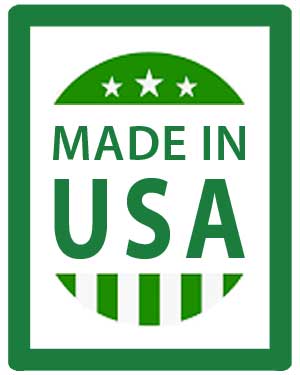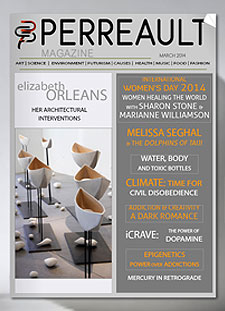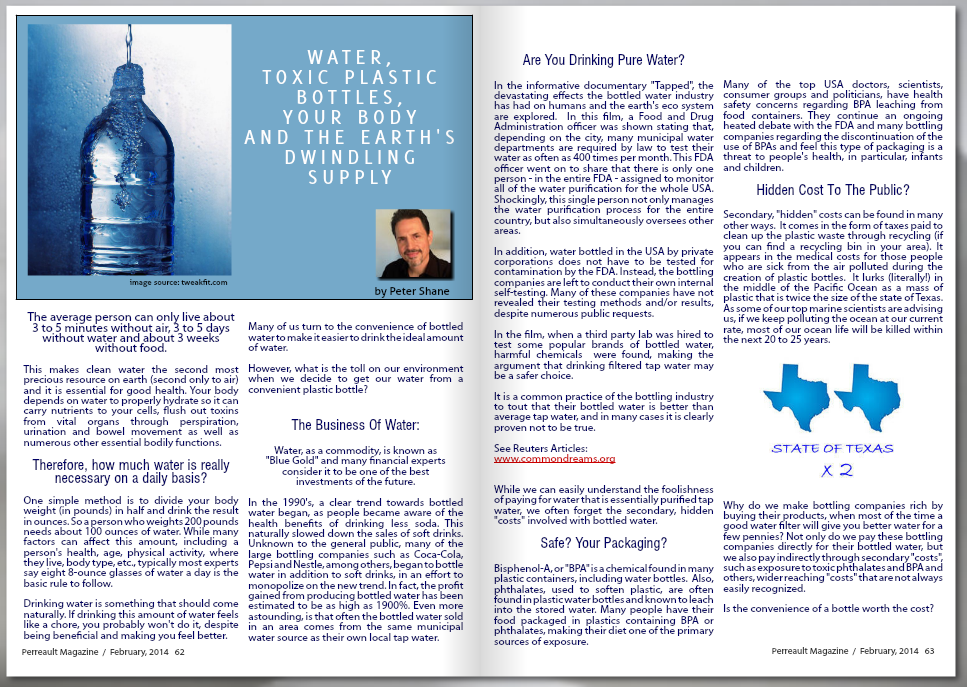The average person can only live about 3 to 5 minutes without air, 3 to 5 days without water, and about 3 weeks without food.
This makes clean water the second most precious resource on earth (second only to air) and is essential for good health. You depend on water to properly hydrate your body so it can carry nutrients to your cells, flush out toxins from vital organs through perspiration, urination, and bowel movements, as well as numerous other essential bodily functions.
So how much water is really necessary on a daily basis?
One simple method is to take your body weight in pounds, divide it in half and drink the resulting number in ounces. So a person that weighs 200 pounds needs about 100 ounces of water, every day. While many factors can affect this amount, including a person’s health, age, physical activity, where they live, body type, etc., most experts typically agree that eight 8-ounce glasses of water a day is a rule most can follow.
Drinking water is something that should come naturally. If drinking this amount of water feels like a chore, you probably won’t do it despite being beneficial and making you feel better. So many of us turn to the convenience of bottled water to make it easier to drink the ideal amount of water.
However, what is the toll on the earth when we decide to get our water from a convenient plastic bottle?
The Business Of Water
Water, as a commodity, is known as “Blue Gold”. Many financial experts consider it to be one of the best investments of the future.
In the 1990’s, a clear trend towards bottled water began, as people became aware of the health benefits of drinking less soda. This naturally slowed down the sales of soft drinks. Unknown to the general public during this time, many of the large bottling companies such as Coca-Cola, Pepsi and Nestle (among others) began to bottle water in addition to soft drinks in an effort to monopolize on the new trend. In fact, the profit gained from producing bottled water has been estimated to be as high as 1900%. Even more astounding, is that often the bottled water sold in an area comes from the same municipal water source as their own local tap water.
Are You Drinking Pure Water?
In the informative documentary, “Tapped”, the devastating effects of the bottled water industry on humans and the earth’s ecosystem are explored. In the film, a Food and Drug Administration officer was shown stating that depending on the city, many municipal water departments are required by law to test their water as often as 400 times per month. This FDA officer went on to share that there is only one person in the entire FDA assigned to monitor all water purification systems for the whole USA. Shockingly, this single person not only manages the water purification process for the entire country, but also simultaneously oversees other areas.
In addition, water bottled in the USA by private corporations does not have to be tested for contamination by the FDA. Instead, the bottling companies are left to conduct their own internal self-testing. Many of these companies have not revealed their testing methods and/or results, despite numerous public requests.
When a 3rd party lab was hired in the movie Tapped to test some popular brands of bottled water, harmful chemicals were found in some of the brands of bottled water. This makes a compelling argument that filtered tap water may be a safer choice to drink.
It is a common practice of the bottling industry to tout that their bottled water is better than average tap water and in many cases, it has been proven untrue.
While we can easily understand the foolishness of paying for water that is essentially purified tap water, we often forget the secondary hidden “costs” involved with bottled water.
How Safe Is Your Packaging?
bisphenol-A or “BPA” is a chemical found in many plastic containers, including water bottles. Also, phthalates, used to soften plastic, are often found in plastic water bottles and are known to leach into the stored water. Many people have their food packaged in plastics containing BPA or phthalates, making their diet one of the primary sources of exposure.
Many of the top USA doctors, scientists, consumer groups, and politicians have health safety concerns regarding BPA leaching from food containers. They continue an ongoing heated debate with the FDA and many bottling companies regarding the discontinuation of the use of BPAs and feel this type of packaging is a threat to people’s health, in particular, infants and children.
Hidden Cost To The Public?
Secondary “hidden” costs can be found in many other ways. It comes in the form of taxes paid to clean up the plastic waste through recycling (if you can find a recycling bin in your area). It appears in the medical costs for those people who are sick from the air pollution during the creation of plastic bottles. It lurks (literally!) in the middle of the Pacific Ocean as a mass of plastic that is twice the size of the state of Texas. It has been recognized by some of our top marine scientists who advise that if we keep polluting the ocean at our current rate, most of our ocean life will be killed within the next 20 to 25 years.
Why do we make bottling companies rich by purchasing their products when most of the time a good water filter will give you better water for a few pennies? Not only do we pay these bottling companies directly for their bottled water, but we also pay indirectly through secondary “costs”, such as exposure to toxic phthalates, BPA, and other, wider-reaching “costs” that are not always easily recognized.
Is the convenience of a bottle worth the cost?
Our Earth’s Perpetual Water Cycle
About 70% of the Earth’s surface is water-covered, of which over 96% is saline water in the oceans. Much of the remaining water exists as clouds, rivers, lakes, ice caps, glaciers, underground water tables, and aquifers and are all part of the Perpetual Water Cycle.
The Perpetual Water Cycle is nature’s way of purifying and maintaining our freshwater sources through the surface of the earth. As rain and other water gradually trickles through nature’s filter, the ground, it eventually finds its way to deep underground water tables and aquifers creating a source of precious, drinkable water.
This freshwater created by nature makes up about only 1% of the water on earth. It is a tiny, rapidly shrinking supply as the human population continues to grow at an unprecedented pace.
Through landfills, run-off and unchecked dumping, the surface of our earth is quickly being covered with waste chemicals ranging from pesticides and chemicals from our lawns to health care products and pharmaceuticals. This waste is rapidly finding its way into our oceans and the Perpetual Water Cycle, greatly affecting our environment and also changing lives.
4 Things We Can Do To Help Our Environment
1 – Buy a good water filter for your kitchen tap
Use a glass, stainless steel, or BPA-free plastic container that you can reuse. As simple as it sounds, it can save families hundreds of dollars a year. A water purifying system for the entire house is also a great investment. Not only will it provide healthy drinking water, but bathing in filtered water is much better for your health and will also help save your water pipes from premature corrosion.
2 – Don’t use bottled water unless you have no other choice
In case of an emergency or in a place where clean filtered water is not available, bottled water may be your only choice. Be certain to make the commitment to keep it out of our landfills and the ocean by properly recycling empty bottles.
3 – Get rid of your lawn! Save money and your health
Each year, tons of toxic chemicals go into maintaining lawns and trickle into and pollute our water supply. Also, the exhaust fumes and noise pollution from lawn mowers, blowers, and other gas-powered home appliances are one of the great secret polluters of our environment. Why waste your precious time each week, inhaling lawnmower exhaust fumes and driving your neighbors crazy by listening to all the noise? Take the time to plant low-maintenance ground cover, grow an organic garden and save your time and money and spend it on doing what you love to do.
4 – Only use natural, eco-friendly products
We now have many natural products that perform as well as their toxic chemical equivalent. Sure, natural products may cost a little more, but the secondary cost of using chemicals: getting sick, pollution, and taxes to repair our ecosystem (Why aren’t the companies who made these products paying for the damage?) is not cost-effective in the long run.
Our choice to buy eco-friendly products, to use glass versus toxic plastic bottles and so many other simple and healthy eco- solutions, all make a difference and help ensure a better Quality of Life.
See Movie: Tapped



